Fairbanks and day trips
I’ve said it before: we are city-averse. We like to “get away”, and generally that’s what I like to write about. So I’ll not say a whole lot about Fairbanks itself, other than that it meets minimum requirements for materials-access and facilities. These are, after all, what allow us to prepare for our ventures away from civilization. Groceries, hardware, gas and propane, car parts and Internet – that sort of thing. I know Fairbanks likely has its charms for urbanophiles, but for us it’s just another hub.
In fact, Fairbanks is physically the hub of a five-spoke wheel, with five major/minor highways radiating out from the city. We arrived from the southeast via AK-2, and we’ll be leaving southwest via AK-3. My previous post covered the Chena Hot Springs Road, and that left the Steese Highway (AK-6) and the Dalton Highway (AK-2, north) for us to visit.
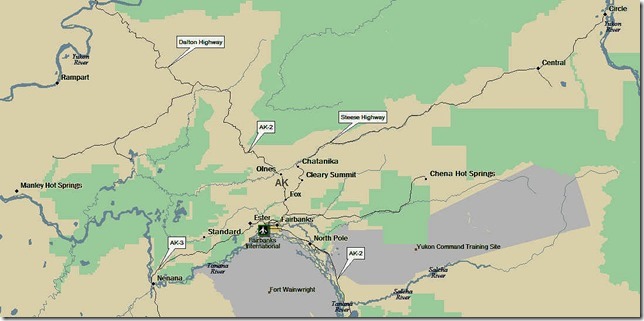
When I say “visit”, I mean it in a fairly brief way. There are roughly 1,600 miles represented in just these two avenues, and even our lavish time allowance will not permit us to travel all those miles — not to mention the 500-600 miles of dirt roads of the Dalton. So Instead of driving all the way to Circle, Manley Hot Springs, or (egad) Deadhorse-Prudhoe Bay, we decided to simply sample the beginnings of those routes. We ended up traveling about a third of the way to Circle, and only a quarter of the way to Deadhorse, but we got a feel for the roads and the terrain, at least a little bit.
STEESE HIGHWAY
The Steese runs northeast and terminates at Circle, roughly 150 miles toward the Canadian border. If you’re curious (we were), Circle was named such because the original settlers (gold miners) thought that it was located on the Arctic Circle. In fact, it’s about 50 miles south of that latitude – but the name has stuck.
Venturing away from Fairbanks, there is a small scattering of touristy stuff.
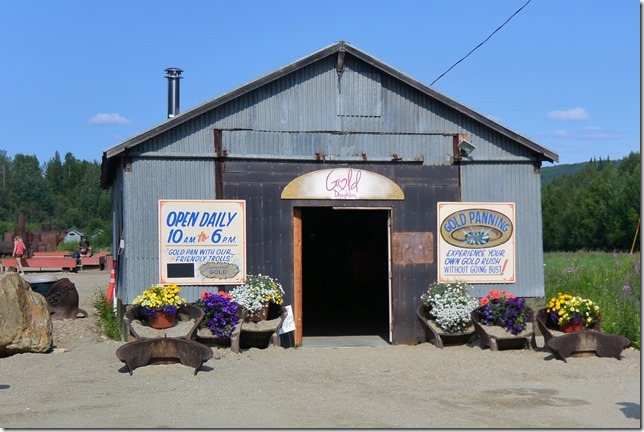
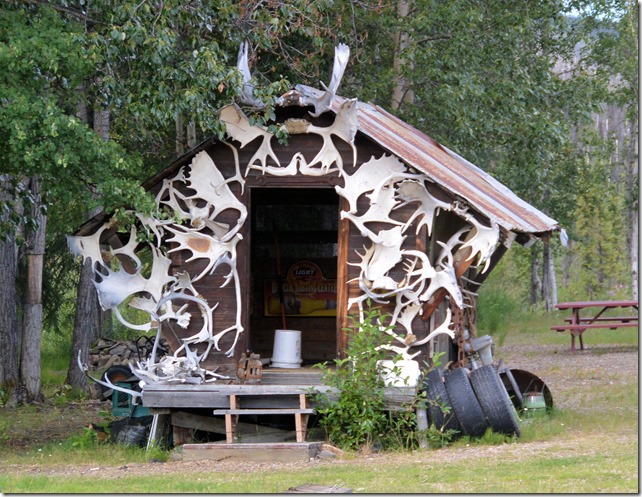
But it fades away quickly. The Steese is, in part, an “access” road for both locals and explorers, and we chose one of its side roads to explore the back country a little. Like everything we’ve seen so far in Alaska, civilization fades very quickly at the city limits, and ground-based back-country access is almost exclusively by foot or ATV. So it turns out to be a real treat to find areas that can be visited by a full-size vehicle, or even an RV. (Below) A family with a Jeep and a big cabin tent, camped on a beautiful pond.
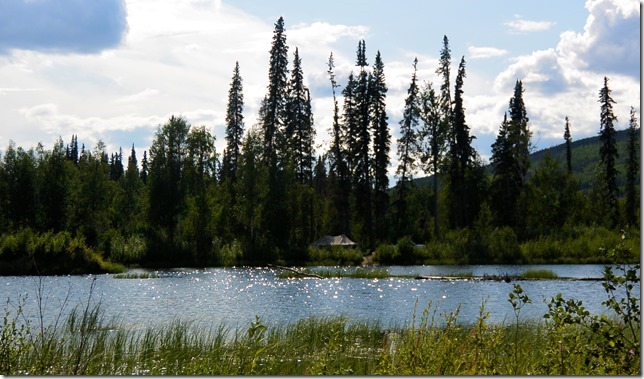
One of our own camps, outside a formal campground, just us and the Chitanaka River nearby.
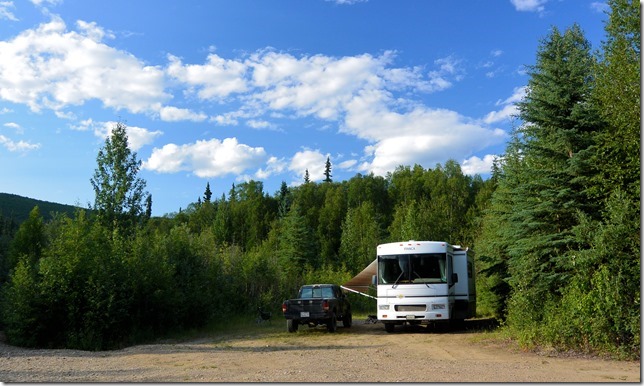
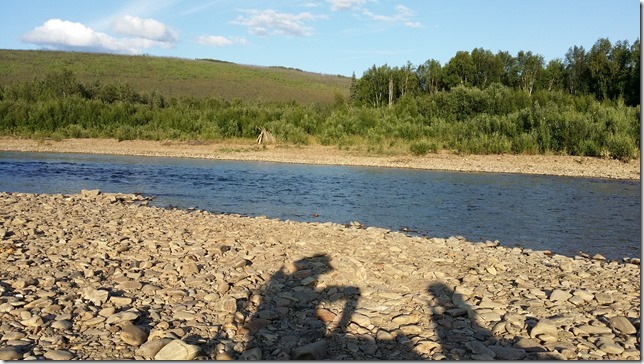
Various riverside and pond-side camps, way back off the highway, nobody around mid-day mid-week. It would be easy to spend a week or more camping near the Steese, hiking into the back country, just enjoying the big space.
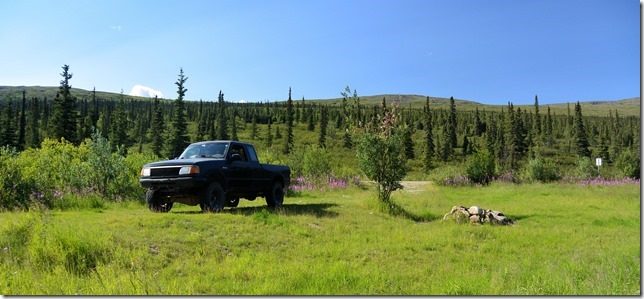
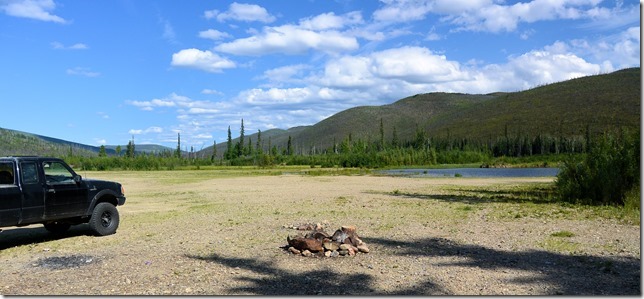
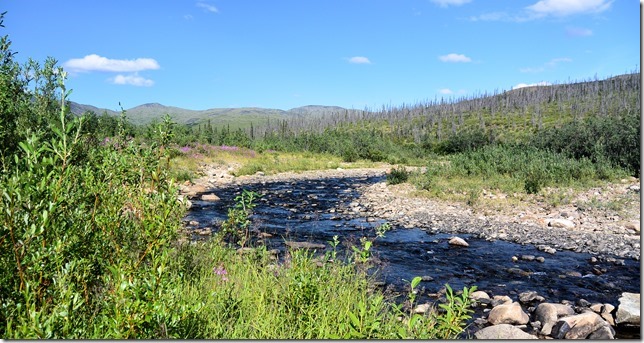
We were about twelve miles back off the Steese, on rough dirt roads, when Ralph started doing really funny things while up-shifting and down-shifting. Stuck in gear, slow shifting, then suddenly really HARD shifts like Whank!! on the drive train, and all variations. Sure enough, the computer didn’t like it and lit up the Check-Engine-Light (CEL). This is always a nail-biting experience, and I can tell you that it tends toward the exquisitely acute when you are a long way from help.
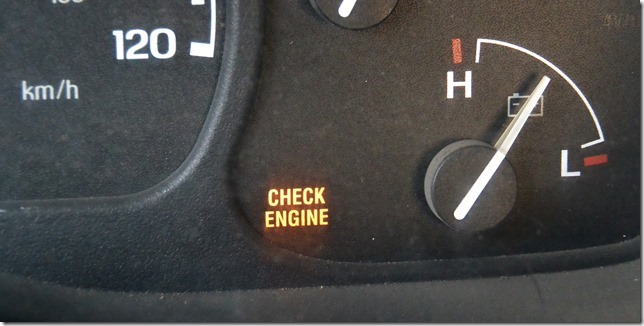
Fortunately, Ralph did keep running, albeit in gears of his own choosing instead of mine. Down the road we did go, with us wondering of course what behavioral variation might follow next.
We had intended to go halfway out the Steese’s 150 miles, but with this new ingredient, we thought it best to turn back toward Fairbanks after only 50 miles or so. No sense taking silly chances.
PIPELINE
The Alaska Pipeline is 800 miles long, running from Prudhoe Bay to Valdez on the Gulf of Alaska. Although the Dalton is the road associated with the Pipeline, it crosses several highways along its route, including the Steese. Soon after the Steese leaves Fairbanks, there is a great interpretive stop, with walking access to the grand pipe itself, and several information placards on display. This point happens to be at mile 450 (from Deadhorse), with about 350 miles to go down to Valdez.
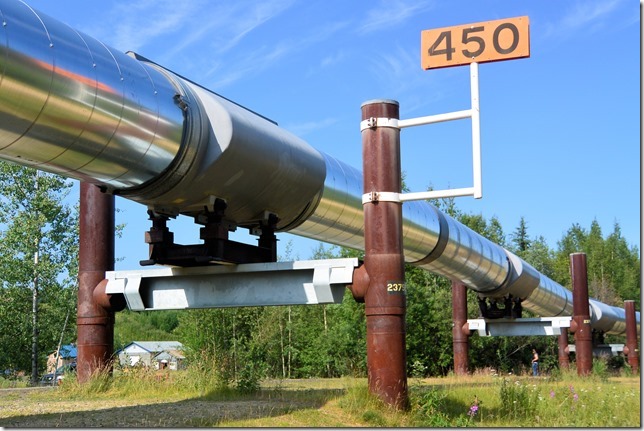
The silver exterior that you can see is not the actual pipe, but the outer shell of insulation. A three-inch wall of thermal barrier surrounds the oil-carrying pipe, which is half-inch welded steel, about 42” in diameter.
Oil being the imperfect fluid it is, various issues arise with deposits, sludge, and build-ups inside the pipe. No, there is no highly-paid scuba-diver who swims up and down the pipe to clean it. Instead, at maintenance stations, a pipe “pig” is inserted. These monsters follow the pipe with the oil flow and clean the inner walls. Amazing.
At this time, the North Slope has declined in production, and the big Pipe is carrying only one-third of its peak flow. Oddly enough, there are significant problems associated with reduced flow. Lower oil temperature is one (it has longer to cool), which makes it thicker and less fluid.
One of the most interesting aspects of the Pipeline is how it’s suspended – loosely, in the extreme. Look at the support base and you will see that it is not fastened in place, but allowed to slide side-to-side by many feet. When the big pipe expands and contracts, something has to give. So the supports move with the pipe, and nothing breaks, it just bends. In just a 200-yard length of pipe, it’s possible to see the bumpers touching both left-hand and right-hand support posts.
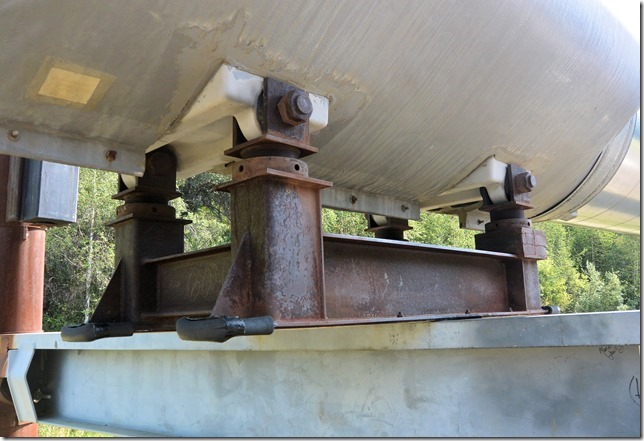
This interpretive stop on the Steese is pretty much a must-see for newbies to the Pipeline (like ourselves), for it brings into perspective the physical object, its environment, and the stupendous nature of the project which created it. The Alaska Pipeline cost $8B in the late 1970’s. That’s Eight Billion Dollars – it was (and I think still is) the largest civilian project ever undertaken.
Over the next two days, Ralph’s errant shifting gradually “healed” itself. It was probably a dirt-related problem, but very difficult to troubleshoot during constant change. While we were waiting for the weekend to pass and a transmission shop to open up, we visited the Fairbanks Antique Auto Museum.
I’m not a big old-auto buff, but with time on our hands and a great tourist brochure, we thought we’d give it a try. They also have “period” clothing to match the time frame of each vintage auto. Turns out it was a great experience – the workmanship and display quality of these cars is as good as you’ll see anywhere in the world. It was a treat to stand next to some truly fine craftsmanship.
I have well over 100 photos of the place, and all of them are worth showing and talking about. But I’ll just offer a small sampling here to give you an idea of how we spent a couple of charming hours in Fairbanks.
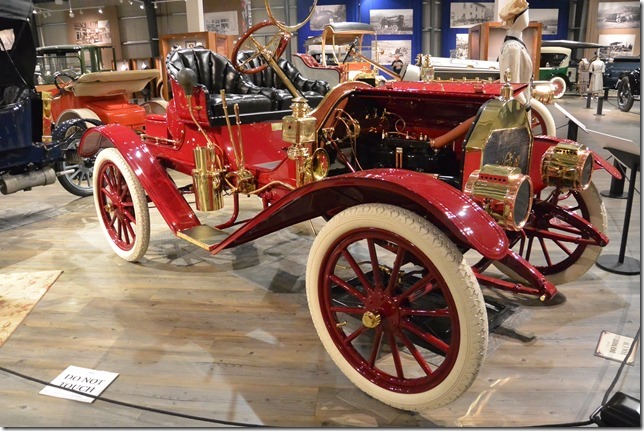
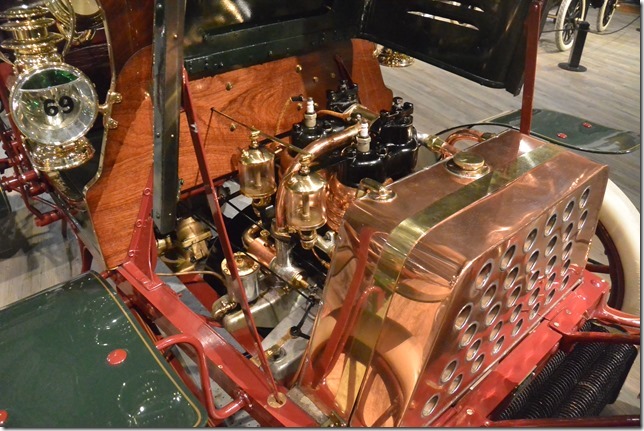
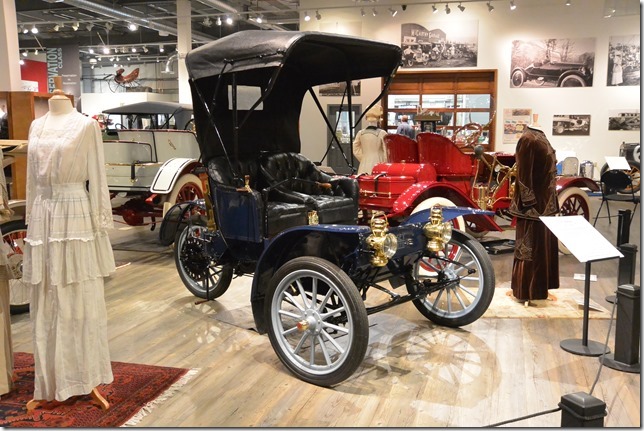
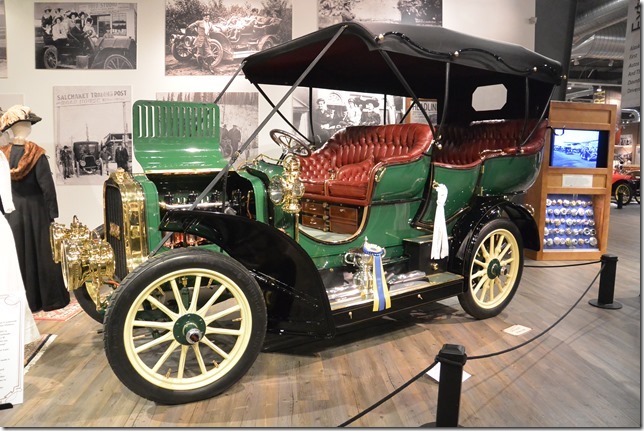
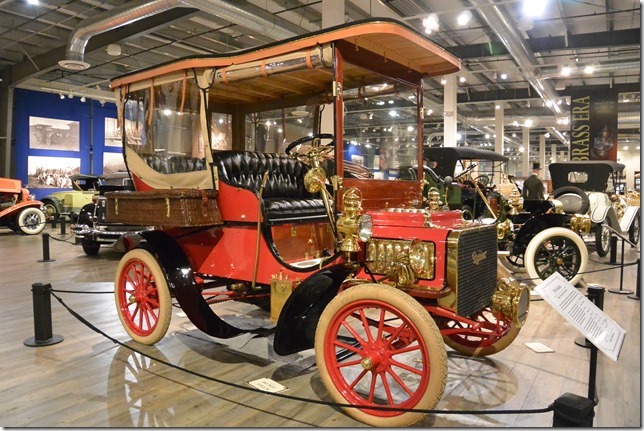
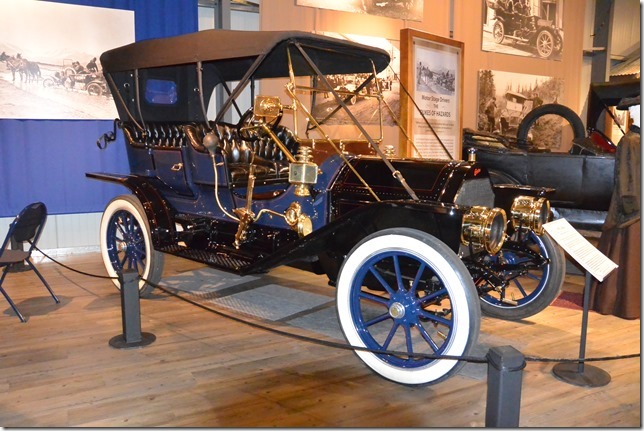
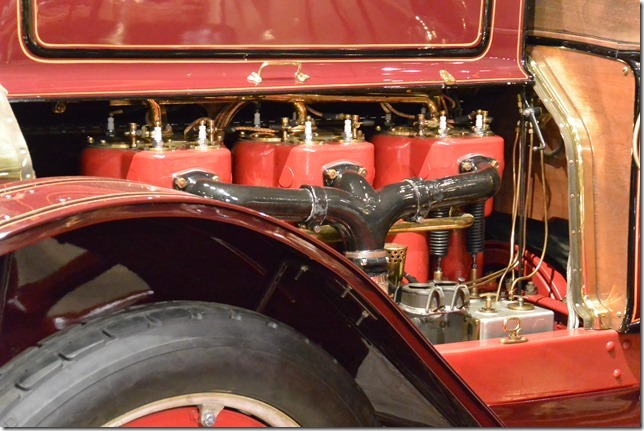
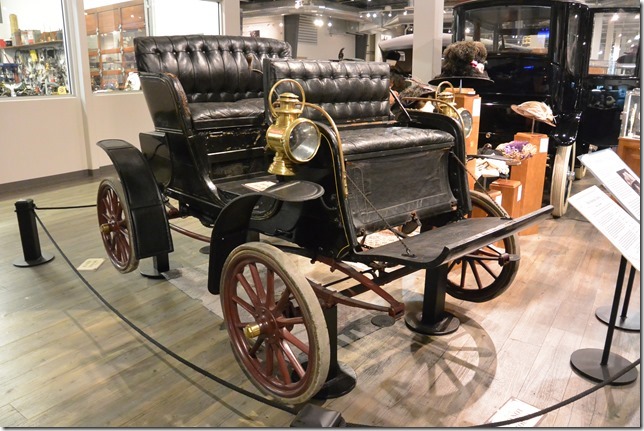
The only outside exhibit, and the only one that never made production, was this “snowmobile” failed effort. It was propelled by the side pontoons rolling through the snow, screw-like. Designed to transport fuel to remote airfields, it was so inefficient that it ended up using more fuel than it could carry just to move forward. It ran out of fuel, including its cargo/payload, and was abandoned.
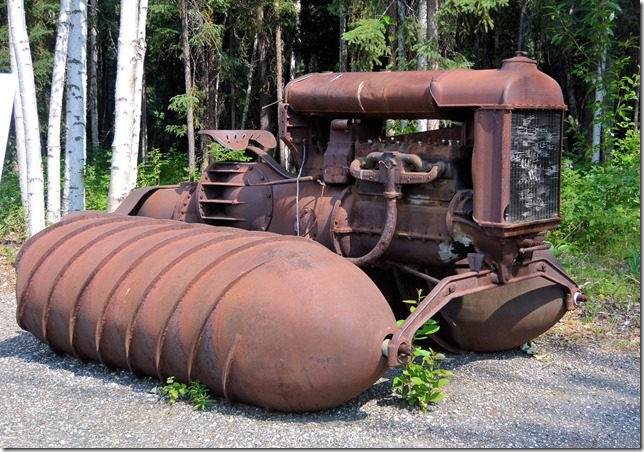
By the time we drove back to camp from the Antique Auto Museum, Ralph was pretty much behaving himself again. On with exploring!
DALTON HIGHWAY
The Dalton Highway itself doesn’t actually begin until after Livengood, which must be reached via AK-2. From Fairbanks to the junction, AK-2 is named the Elliot Highway. There are two overwhelming associations with the Dalton: 1. It runs over 400 miles all the way to the Arctic Ocean at Prudhoe Bay, and 2. It parallels the famous Alaska Pipeline we first saw from the Steese Highway.
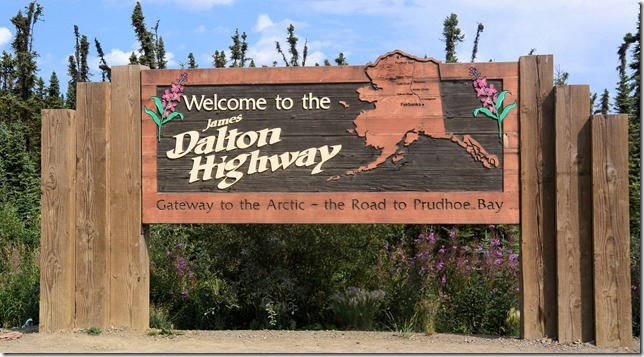
For longer stretches of the Pipeline, and an even greater appreciation of its scope, the Dalton affords many opportunities to watch the great Pipe work its way across the wilderness. We decided to follow the Dalton up to the Yukon River. By this time, the Yukon had come to seem like an old friend, and the 130 or so miles seemed like a suitable fraction of the Dalton to throw into our experience bucket. We did get a chance to see long stretches of the big tube, plus some wildfire activity and a LOT of open space.
Some things get your attention right away. It looks like it could be a really long drive.
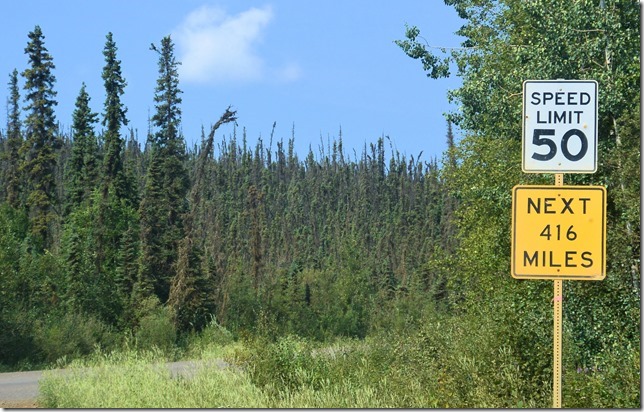
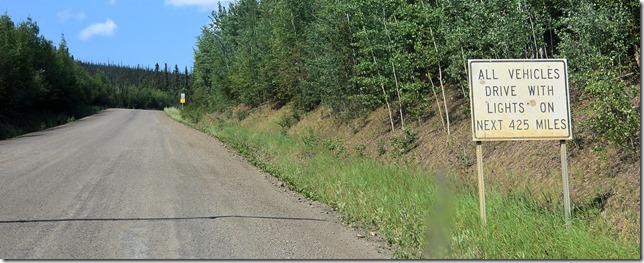
Although not exactly joined-at-the-hip, the pipeline and highway are pretty closely coupled, sometimes very obviously so.

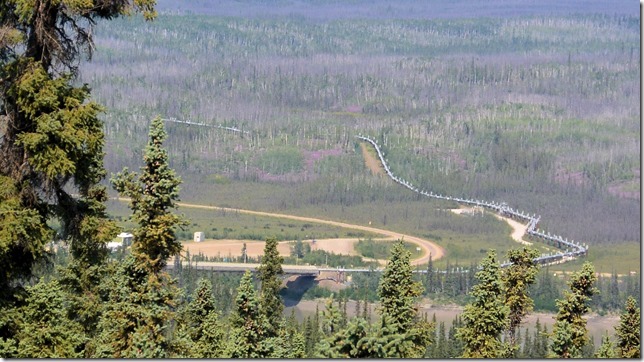
The Dalton is a “haul” road, and anything you can imagine is getting hauled, seven days a week. Some of it is quite wide, and the standard 28-foot road width doesn’t seem like much to get past them. As with all the tundra-based roads, shoulders are soft, sharp, and extremely treacherous.
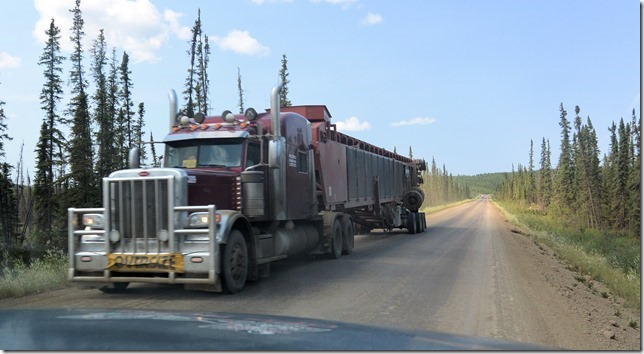
Fire crews were in the area and on duty. One of the fires had actually crossed the highway, but not while we were there.
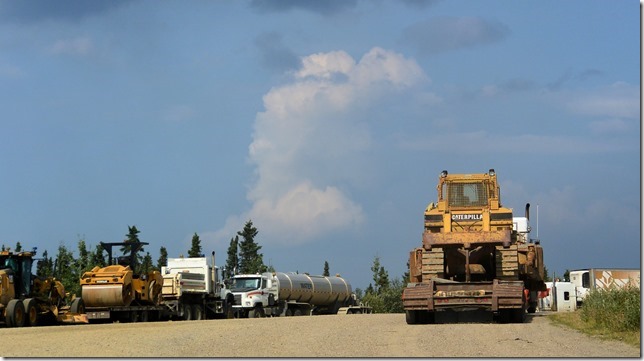
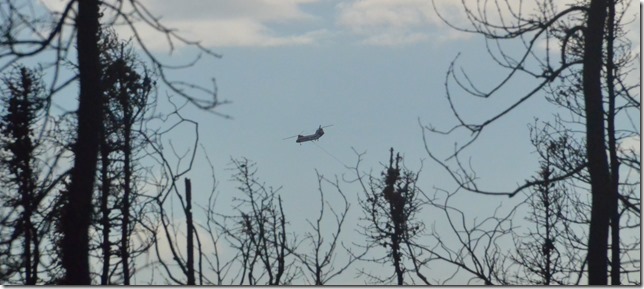
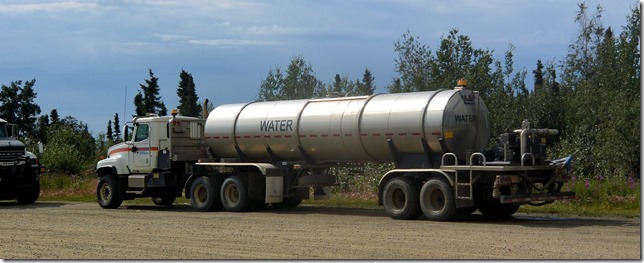
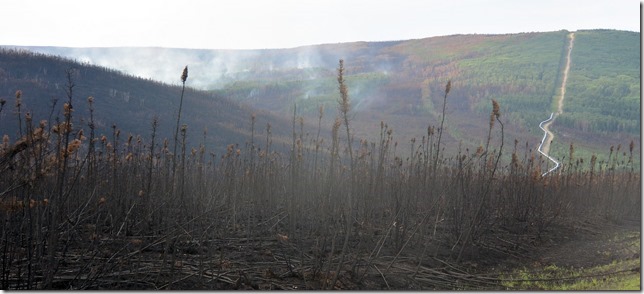
The Pipeline is heavily insulated, and seldom at risk from a fire – this time included. Most fires in Alaska (300-plus active as of this writing) are lightning-caused. Like some other conifers, black spruce cones will only open up when subjected to extreme heat.
Still in the smoky area of the fire, we spotted a sign that pointed to a pumping station. Wow, that could be interesting, so in we went, a mile or so down a narrow dirt road. We got to this fence, saw the signs, and stopped. Maybe they had a tour of some sort? A big, and I mean BIG guard came out to talk to us. Maybe 360 pounds or more. “What can I help you with?” was actually a friendly way to say “Shouldn’t you be somewhere else?”. I said it looked pretty restricted, and that we probably should turn around and drive away, and the gigantic guard was in wholehearted agreement.
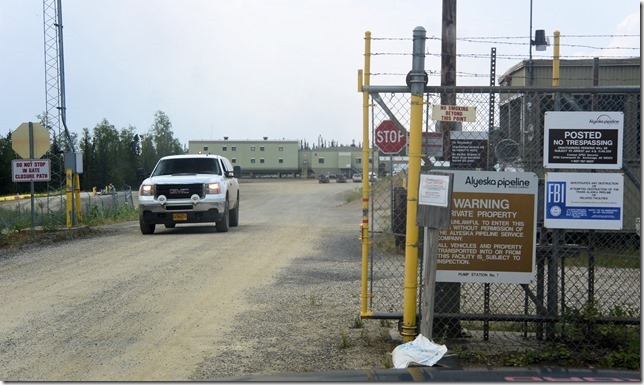
What puzzled us both was this: if security of the Pipeline is an issue, what’s to prevent sabotage of the remaining non-guarded 799 miles of pipe? I know the guard was just doing his job – I’m just curious why that job exists.
We got back on the highway, and kept on going past the burn area, and we drove out of the smoky area into beautiful blue skies. We eventually arrived at the river. Big river, big bridge. Also, the Yukon River bridge slants downward at a 6% grade – quite unusual for a bridge to do, and no mean engineering feat. The bridge had to be able to withstand enormous blocks of river ice slamming into it during break-up. The only good stanchion points were at marked different elevations, so 6% was what they had to do. The Pipeline is slung underneath the bridge.
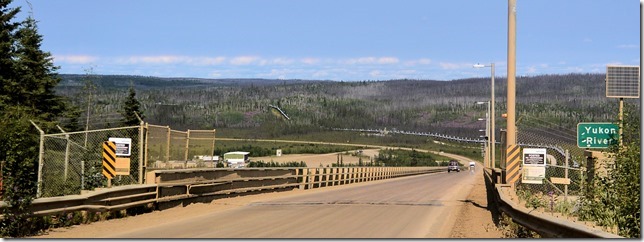
Since we were on only a day-trip, it was time to reverse course and head back for our last night in Fairbanks. There was a lot of the Dalton left to see, including some LONG sections of dirt. That will just have to wait for our next trip.
INTRUSION
There was a lot of flack in the 1970’s about the Pipeline “ruining” the last great wilderness. Crippling caribou migrations, altering breeding patterns, driving entire species to extinction, destroying the tundra and the permafrost – these were the alarmist cries that I remember having heard. At that time, Alaska was far away, and well down my personal list of critical cares, so I wasn’t heavily involved. Not without considerable wrangling, the Pipeline project was approved and went through.
Today, I have seen the impact of the big Pipe, and it’s visually significant for sure. With any lofty point of view, the track of the beast is unmistakable, whether above or underground. The Road, as well, is of course and indelible print of man’s presence upon the land. But is it overall a “bad” thing, as so many purists would have us believe? The Pipe is insulated, and either buried or suspended above ground. Migrations have been unaffected, and other impacts have been minimal or non-existent away from the actual paths of pipe and road. Peaceful co-existence (to borrow a cold-war term) seems to be the current reality. For sure, the big pre-project debate brought enough focus on the project that essential features were designed-in from the start.
I’m not going to do any serious review of the pros and cons here, for I don’t have the time or information resources and I’m sure I’d make too many mistakes. Suffice it to say this: I consider myself an environmentalist, and yet I cannot say that I wish the Pipeline hadn’t been done. It did wonders for Alaska’s economy, which in turn helped out with creation and maintenance of extensive wilderness areas that make the lower-48 pale by comparison. The Road makes it possible for the likes of you and me to see the one of most impressive wild expanses of land in North America. And the time and attention that go into safety measures, wildlife preservation and management, permafrost monitoring and insulation, etc. etc. are ecologically valuable in this era of efforts to control our human impacts.

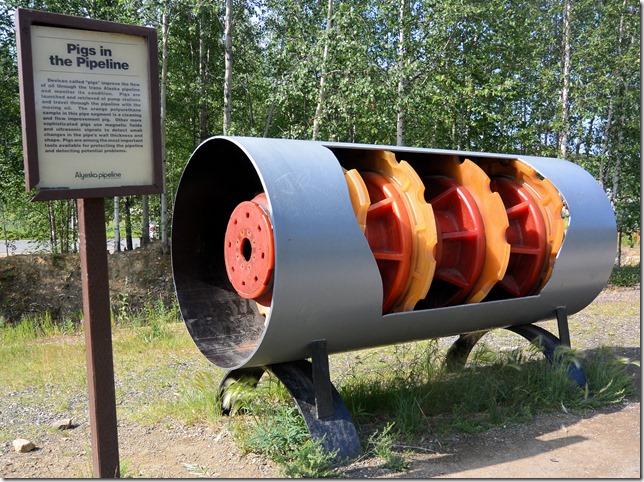
Hi Gregg & Karin,
Your Mom has been sharing your posts with me and I have enjoyed reading them all. You bring an insight and interest level that is truly interesting and educational. My wife (Karin) and I also have an RV and have thought about a trip to Alaska (me more than her), but the right motivation hasn’t occurred just yet. Your posts are stimulating my interest level, however. We have been all over the USA and Lower Canada as far as St. John’s, Newfoundland and as far north as 150 mile house. Now you have me plotting!
Thanks for posting! I’m enjoying them immensely! Be safe and celebrate every day.
Regards,
Steve White
Thanks Steve for the high praise.
If you don’t want to rely on my Mom :o) you can subscribe to the blog by using the NOTIFY ME button on the left-hand side. See the blog portal for details (but it’s easy). You’ll get a confirming email to which you must reply — then after that, you’ll get a short summary of each post when it occurs.
http://www.divver-city.com/blog
Very interesting Greg, and beautiful photos. I’m sure the Auto Museum was not there when I was in Fairbanks many years ago. Keep’em coming. Love, Mom
Very interesting today. I especially appreciated your insight into the pipeline.
Mary, thanks for your comment. I have found, over the years, that contentious topics tend to have extreme points of view associated with them. I’ve had a few of my own. After a while, I realized that the operative word was “extreme”. The middle ground is almost always a best-fit solution. In the case of the Pipeline, the extremists ended up making sure that the big tube was implemented in a really responsible way, with environmental stewardship as prominent a criterion as oil flow. Details of the project and its design were (to me, an engineer) fascinating. And hey, look what you can accomplish with $10,000,000 per mile to spend!
I agree with Mr.Henderson and then some! Great pics and great writing.You definitely keep it interesting.Be safe and read you next time.—John L.
Very fascinating travels thanks to your excellent descriptions my friend!